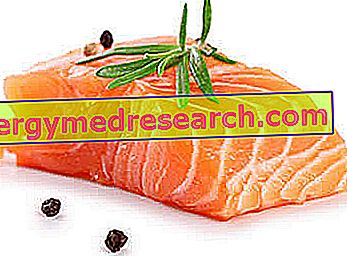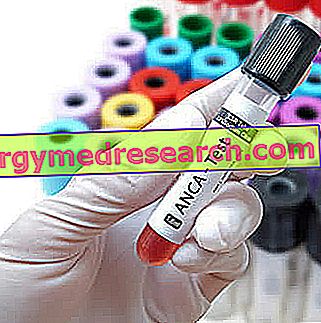Generality
Thiocolchicoside is an active ingredient with a muscle relaxant action.

It is a product of semisynthetic origin and, more precisely, of a sulfur derivative of colchicoside, a natural alkaloid contained in the colchic ( Colchicum autumnale L.), a plant belonging to the Liliaceae family.
Thiocolchicoside is part of the composition of medicines suitable for oral administration (orodispersible capsules and tablets), parenterally (solution for injection for intramuscular use) and topically (skin cream and foam).
Thiocolchicoside medicines suitable for oral and parenteral administration can only be dispensed upon presentation of a repeatable prescription . On the contrary, topical thiocolchicoside-based medicines (skin cream and foam) are generally classified as OTC (over-the-counter drugs), therefore their free sale is allowed.
Examples of Specialties Medicines containing Thiocolchicoside
- Miorexil®
- Miotens®
- Muscoflex®
- Muscoril®
- Tiocolchicoside DOC Generici®
- Tiocolchicoside Mylan®
- Tiocolchicoside Zentiva®
- Tiocolchicoside EG®
- Tioside®
Therapeutic indications
When is the use of thiocolchicoside indicated?
The use of oral and parenteral thiocolchicoside is useful as an adjuvant in the treatment of painful muscle contractures in the presence of acute pathologies of the spine .
The use of thiocolchicoside topically, on the other hand, is indicated in the treatment of:
- Acute and chronic low back pain;
- Cervico-brachial neuralgias;
- Stubborn stiff neck;
- Post-operative pain;
- Post-traumatic pain.
Warnings
Warnings and Precautions for the use of Thiocolchicoside
Before starting treatment with thiocolchicoside, you must inform your doctor if you have epilepsy or if you are predisposed to convulsions, as the active ingredient has the potential to exert a convulsive action.
However, as a precautionary measure, before taking thiocolchicoside-based medicines, it is advisable to inform your doctor of your health conditions, informing you of the possible presence of any type of disorder or disease, even different from epilepsy or from the seizure disorders mentioned above.
Furthermore, during treatment with oral or parenteral thiocolchicoside, attention should be paid to the appearance of symptoms that could indicate the onset of liver damage, such as:
- Nausea and vomit;
- Abdominal pains;
- Loss of appetite;
- Fatigue;
- Dark urine;
- Etc.
Should one or more of the above symptoms occur, it is therefore advisable to contact the doctor immediately.
In addition to what has been said so far, since episodes of vasovagal syncope have occurred following the parenteral administration of thiocolchicoside, it should be remembered that after the intramuscular administration of the active ingredient, the patient should be adequately monitored .
With regard to the use of thiocolchicoside topically, however, it is advisable to point out that the application for long periods of time can lead to sensitization phenomena .
Finally, remember that taking thiocolchicoside can cause drowsiness, negatively affecting the ability to drive vehicles and / or use machinery. For this reason, these activities should be avoided during therapy with this active ingredient.
Please note
Oral and parenteral thiocolchicoside should NOT be given to children and adolescents under 16 years of age.
Pharmacological Interactions
Interactions between thiocolchicoside and other drugs
Before starting treatment with thiocolchicoside (in particular, when administered orally or parenterally), it is advisable to inform your doctor if you are taking - or have recently been taken - one or more of the following drugs:
- Alprazolam (an anxiolytic) and zopiclone (a hypnotic sedative), as they could cause an increase in the muscle relaxant effects induced by thiocolchicoside;
- Baclofen (a centrally acting muscle relaxant);
- Trazodone (an antidepressant);
- Zolpidem (a hypnotic sedative), since the concomitant intake with thiocolchicoside can cause an increase in central depressive effect.
In any case, before starting the therapy based on thiocolchicoside - whether orally or topically - it is necessary to tell the doctor if you are taking, or have recently been taken, drugs or products of any kind, including medicines without a medical prescription (SOP), over-the-counter drugs (OTC), herbal and phytotherapeutic products and homeopathic products.
Side effects
Side effects caused by the intake of thiocolchicoside
Thiocolchicoside is able to cause side effects, although not all patients manifest them or manifest them in equal measure. In fact, each person reacts subjectively to the administration of the drug manifesting side effects that are different in type and intensity, or not manifesting them at all.
However, the following are the main side effects that could occur during treatment with thiocolchicoside.
Oral and parenteral thiocolchicoside
Following administration of thiocolchicoside orally or by intramuscular injection the following side effects may occur:
- Drowsiness;
- Stomach pain and / or diarrhea;
- Nausea and vomit;
- Abdominal pains;
- Urticaria;
- Passenger obstruction;
- Heartburn;
- Hypotension;
- Convulsions;
- Hepatitis;
- Allergic reactions, even serious, in sensitive individuals (including allergic skin reactions).
Furthermore, immediately after intramuscular administration of thiocolchicoside, vasovagal syncope could occur.
Thiocolchicoside topically
The use of thiocolchicoside topically is generally well tolerated; however, the possibility of occurrence of allergic reactions in sensitive individuals cannot be excluded. Furthermore, use over long periods of time can lead to the appearance of sensitization phenomena.
Overdose
At present, no cases of overdose with thiocolchicoside are known. However, if you take excessive doses of the active ingredient in question, you should contact your doctor immediately.
There are no specific antidotes, therefore any treatment will only be supportive and symptomatic.
Action mechanism
How does thiocolchicoside work?
It is believed that the muscle relaxant action exerted by thiocolchicoside is connected to the ability of the active principle to bind to type A GABAergic receptors and to strychnine-sensitive glycinergic receptors . Since the studies carried out showed that thiocolchicoside behaves as a competitive antagonist of the GABA-A receptor (exerting a convulsive effect ), the muscle relaxant action could be exerted at the supraspinal level, through a complex regulation mechanism.
Use and Posology
How to take Thiocolchicoside
As mentioned, thiocolchicoside is available in pharmaceutical formulations suitable for oral administration ( orodispersible capsules and tablets ), for parenteral administration ( solution for injection for intramuscular use ) and for topical administration ( skin cream and foam ).
The capsules must be swallowed whole with a little water; orodispersible tablets can be dissolved in the mouth, with or without water; the solution for injection should be administered by specialized personnel ; while the skin cream and foam must be applied locally to the skin in the area affected by the disorder being treated.
The dosage of thiocolchicoside should be established by the doctor for each patient. However, the dosages normally used in therapy will be reported below.
Oral thiocolchicoside
When administered orally, the dose of thiocolchicoside normally used is 8 mg every 12 hours, for a total of 16 mg of active ingredient per day. The duration of the treatment must not exceed 7 days.
Intracuscular thiocolchicoside
When injected intramuscularly, the dose of thiocolchicoside usually used in therapy is 4 mg every 12 hours, for a total of 8 mg of active ingredient per day. The duration of treatment should not exceed 5 days.
Thiocolchicoside topically
When thiocolchicoside is used in the form of skin cream and foam, the usual recommended dose is 2-3 applications per day.
Did you know that ...
To promote recovery from painful states treated with topical thiocolchicoside, it may be useful to associate the use of the active ingredient in question with massotherapy and / or kinesitherapy in order to restore, improve and recover the movement of muscles and joints.
Pregnancy and breastfeeding
Can thiocolchicoside be taken during pregnancy and during breastfeeding?
Due to the potential negative effects that thiocolchicoside can exert on the fetus and newborn, its use - through any route of administration, including topical route - is generally contraindicated in pregnant women and breastfeeding mothers. If the need arises to start a drug therapy with thiocolchicoside, therefore, this category of patients must absolutely inform the doctor of the state in which they are (pregnancy or breastfeeding).
Contraindications
When thiocolchicoside should not be used
The use of thiocolchicoside is contraindicated in case of:
- Known hypersensitivity to thiocolchicoside itself and / or to one or more of the excipients contained within the medicinal product to be used;
- Presence of flaccid paralysis;
- Presence of muscular hypotonia;
- Women of childbearing age who do not use contraceptives;
- Pregnancy and breastfeeding.
Please note
For more in-depth information on indications, warnings and precautions, interactions, side effects, use during pregnancy and during lactation and contraindications of different thiocolchicoside-based medicines, it is advisable to consult your doctor and read the leaflet carefully illustrative of the medicinal specialty that one needs to use.



